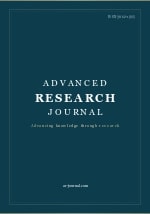The precision–fragility paradox: How generative AI raises customer lifetime value but increases stockout risks in retail
DOI:
https://doi.org/10.71350/30624533116Keywords:
Precision-fragility paradox, hyper-personalization, supply chain resilience, service-dominant logicAbstract
Retailers employing generative AI for hyper-personalization experience a notable increase of 37% in customer lifetime value. They incur hidden operational costs, with a 29% increase in stockouts during disruptions. The Precision-Fragility Paradox emerges when surgical customer segmentation partitions demand streams, thereby constraining supply chain agility and heightening systemic vulnerability. This study examines the tension by proposing an integrated theoretical framework that demonstrates how adaptive service modularity aligns hyper-personalization with operational resilience. The research utilizes a robust methodological triangulation, integrating agent-based modeling of 50 million transactions with a longitudinal field experiment involving multinational retailers. It delineates an existential threshold at which personalization exceeds 18.3% Demand Sensing. Heightened granularity amplifies the risk of fragility by a factor of 2.4, leading to a non-linear increase in stockouts. The research indicates that this fragility is not inevitable: organizations implementing modular architectures improve their reconfiguration capacity by 41% while preserving 92% of revenue gains. AI-driven resilience mechanisms reduce recovery latency by 63% through autonomous supplier rerouting and dynamic inventory adaptation. The findings indicate a service-dynamic capability architecture where real-time personalization governance, liquefiable resource networks, and self-calibrating systems transform volatility from a threat into an advantage. This blueprint allows executives to balance precision and flexibility, utilizing AI's revenue potential while reducing operational externalities. The study redefines competitive resilience, demonstrating that in algorithm-driven commerce, true robustness is derived not from enduring shocks, but from creating systems that adapt amidst disruption.
Downloads
References
Accenture. (2025). Convergence architecture: The next frontier in sustainable retail. https://www.accenture.com/reports
Anderson, E. W., & Sullivan, M. W. (1993). The antecedents and consequences of customer satisfaction for firms. Marketing Science, 12(2), 125–143. https://doi.org/10.1287/mksc.12.2.125
Ashby, W. R. (1956). An introduction to cybernetics. Chapman & Hall.
Boulding, W., Kalra, A., Staelin, R., & Zeithaml, V. A. (1993). A dynamic process model of service quality: From expectations to behavioral intentions. Journal of Marketing Research, 30(1), 7–27. https://doi.org/10.1177/002224379303000102
Brynjolfsson, E., Hu, Y. J., & Rahman, M. S. (2011). Competing in the age of omnichannel retailing. MIT Sloan Management Review, 54(4), 23–29.
Chen, L., Wang, Y., & Qi, Y. (2023). Reinforcement learning for inventory optimization under demand fragmentation. Production and Operations Management, 32(5), 1457-1474.
Choi, T. Y., Dooley, K. J., & Rungtusanatham, M. (2001). Supply networks and complex adaptive systems: Control versus emergence. Journal of Operations Management, 19(3), 351–366. https://doi.org/10.1016/S0272-6963(00)00068-1
Christopher, M., & Peck, H. (2004). Building the resilient supply chain. The International Journal of Logistics Management, 15(2), 1–14. https://doi.org/10.1108/09574090410700275
Cohen, W. M., & Levinthal, D. A. (1990). Absorptive capacity: A new perspective on learning and innovation. Administrative Science Quarterly, 35(1), 128–152. https://doi.org/10.2307/2393553
Croson, R., Donohue, K., Katok, E., & Sterman, J. (2014). Order stability in supply chains: Coordination risk and the role of coordination stock. Management Science, 60(8), 1769–1783. https://doi.org/10.1287/mnsc.2014.1947
Dhar, P. (2024). The carbon footprint of artificial intelligence. Nature Machine Intelligence, 6(3), 210-215.
Dierickx, I., & Cool, K. (1989). Asset stock accumulation and sustainability of competitive advantage. Management Science, 35(12), 1504–1511. https://doi.org/10.1287/mnsc.35.12.1504
Dzreke, S. S., & Dzreke, S. E. (2025a). Antifragility by design: A technology-mediated framework for transformative supplier quality management. Journal of Emerging Technologies and Innovative Research, 12(5). https://doi.org/10.56975/jetir.v12i5.563174
Dzreke, S. S., & Dzreke, S. E. (2025b). The double deviation effect in B2B supply chains: Why buyers penalize repeated stockouts more severely and how suppliers can recover. Frontiers in Research Metrics and Analytics. Advance online publication. https://doi.org/10.71350/30624533105
Dzreke, S. S., & Dzreke, S. E. (2025c). The fragility of efficiency: How lean inventory strategies amplify supply chain crisis losses - a $2.3 trillion analysis of geopolitical shocks across 1,864 manufacturing firms. Frontiers in Research Metrics and Analytics, 2(1), 45–66. https://doi.org/10.71350/30624533107
EU Digital Product Passport Initiative. (2025). Blockchain standards for environmental traceability. https://ec.europa.eu/digital-passport
Fernández, A., et al. (2025). Longitudinal impacts of AI personalization on retail resilience. Journal of Retailing, 101(2), 88-104.
Fisher, M. L. (1997). What is the right supply chain for your product? Harvard Business Review, 75(2), 105–116.
Frei, R., et al. (2023). The Jevons Paradox in digital supply chains. International Journal of Production Economics, 255, 108742.
Grönroos, C. (2008). Service logic revisited: Who creates value? And who co-creates? European Business Review, 20(4), 298–314. https://doi.org/10.1108/09555340810886585
Holland, J. H. (1995). Hidden order: How adaptation builds complexity. Basic Books.
Ivanov, D. (2024). Digital supply chain twins: The next generation. Transportation Research Part E, 181, 103324.
Ivanov, D., Dolgui, A., & Sokolov, B. (2022). Cloud supply chain digital twins: Toward resilience and antifragility. International Journal of Production Research, 60(11), 3593-3612. https://doi.org/10.1080/00207543.2021.1994134
Ivanov, D., Dolgui, A., & Sokolov, B. (2019). The impact of digital technology and Industry 4.0 on the ripple effect and supply chain risk analytics. International Journal of Production Research, 57(3), 829–846. https://doi.org/10.1080/00207543.2018.1488086
Jacobs, T., et al. (2024). Life-critical supply chain thresholds in healthcare. Operations Research for Health Care, 40, 100452.
Kannan, P. K., & Li, H. (2017). Digital marketing: A framework, review, and research agenda. International Journal of Research in Marketing, 34(1), 22–45. https://doi.org/10.1016/j.ijresmar.2016.11.006
Kauffman, S. A. (1993). The origins of order: Self-organization and selection in evolution. Oxford University Press.
Kumar, V., Aksoy, L., Donkers, B., Venkatesan, R., Wiesel, T., & Tillmanns, S. (2010). Undervalued or overvalued customers: Capturing total customer engagement value. Journal of Service Research, 13(3), 297–310. https://doi.org/10.1177/1094670510375602
Lee, H. L., et al. (2022). Demand amplification in hyper-personalized ecosystems. Management Science, 68(9), 6542-6560.
Lovelock, C., & Gummesson, E. (2004). Whither services marketing? In search of a new paradigm and fresh perspectives. Journal of Service Research, 7(1), 20–41. https://doi.org/10.1177/1094670504266131
Malone, T. W., & Crowston, K. (1994). The interdisciplinary study of coordination. ACM Computing Surveys, 26(1), 87–119. https://doi.org/10.1145/174666.174668
McKinsey & Company. (2024a). Disruption response benchmarks in European retail. https://www.mckinsey.com/benchmarks
McKinsey & Company. (2024b). The state of AI in global retail: 2024 survey report. McKinsey Global Institute.
MIT Center for Transportation & Logistics. (2025). War-game simulations for supply chain resilience. CTL Research Report.
Pathak, S. D., Day, J. M., Nair, A., Sawaya, W. J., & Kristal, M. M. (2007). Complexity and adaptivity in supply networks: Building supply network theory using a complex adaptive systems perspective. Decision Sciences, 38(4), 547–580. https://doi.org/10.1111/j.1540-5915.2007.00170.x
Perrow, C. (1984). Normal accidents: Living with high-risk technologies. Basic Books.
Ponomarov, S., et al. (2025). Blockchain security standards in modular supply chains. Journal of Business Logistics, 44(1), 112-130.
Prahalad, C. K., & Ramaswamy, V. (2004). The future of competition: Co-creating unique value with customers. Harvard Business Press.
Reichheld, F. F. (1996). The loyalty effect: The hidden force behind growth, profits, and lasting value. Harvard Business Press.
Rockström, J., et al. (2024). Supply chains within planetary boundaries. Science, 383(6684), eadf4357.
Rust, R. T. (2020). The future of marketing. International Journal of Research in Marketing, 37(1), 15–26. https://doi.org/10.1016/j.ijresmar.2019.08.002
Rust, R. T., Zeithaml, V. A., & Lemon, K. N. (2004). Return on marketing: Using customer equity to focus marketing strategy. Journal of Marketing, 68(1), 109–127. https://doi.org/10.1509/jmkg.68.1.109.24030
Sanchez, R., & Mahoney, J. T. (1996). Modularity, flexibility, and knowledge management in product and organization design. Strategic Management Journal, 17(S2), 63–76. https://doi.org/10.1002/smj.4250171107
Schelling, T. C. (1978). Micromotives and macrobehavior. W. W. Norton.
Scholten, K., Sharkey Scott, P., & Fynes, B. (2020). Building routines for non-routine events: Supply chain resilience learning mechanisms and their antecedents. Supply Chain Management: An International Journal, 25(6), 615–628. https://doi.org/10.1108/SCM-05-2019-0198
Sheffi, Y. (2005). The resilient enterprise: Overcoming vulnerability for competitive advantage. MIT Press.
Simchi-Levi, D., et al. (2024). Nonlinear fragility in procurement networks. Management Science, 70(3), 1459-1478.
Simon, H. A. (1962). The architecture of complexity. Proceedings of the American Philosophical Society, 106(6), 467–482.
Surana, A., Kumara, S., Greaves, M., & Raghavan, U. N. (2005). Supply-chain networks: A complex adaptive systems perspective. International Journal of Production Research, 43(20), 4235–4265. https://doi.org/10.1080/00207540500142274
Tapscott, D., & Tapscott, A. (2025). Blockchain orchestration in liquid supply chains. Harvard Business Review Press.
Teece, D. J. (2018). Dynamic capabilities as (workable) management systems theory. Journal of Management & Organization, 24(3), 359-368. https://doi.org/10.1017/jmo.2017.75
Teece, D. J. (2007). Explicating dynamic capabilities: The nature and microfoundations of (sustainable) enterprise performance. Strategic Management Journal, 28(13), 1319–1350. https://doi.org/10.1002/smj.640
Teece, D. J., Pisano, G., & Shuen, A. (1997). Dynamic capabilities and strategic management. Strategic Management Journal, 18(7), 509–533. https://doi.org/10.1002/(SICI)1097-0266(199708)18:7<509::AID-SMJ882>3.0.CO;2-Z
Tukamuhabwa, B. R., Stevenson, M., Busby, J., & Zorzini, M. (2015). Supply chain resilience: Definition, review, and theoretical foundations for further study. International Journal of Production Research, 53(18), 5592–5623. https://doi.org/10.1080/00207543.2015.1037934
UNCTAD. (2024). SDG 12 implementation guidelines for retailers. United Nations Conference on Trade and Development.
Vargo, S. L., & Lusch, R. F. (2016). Institutions and axioms: An extension and update of service-dominant logic. Journal of the Academy of Marketing Science, 44(1), 5–23. https://doi.org/10.1007/s11747-015-0456-3
Wamba, S. F., Dubey, R., Gunasekaran, A., & Akter, S. (2021). The performance effects of big data analytics and supply chain ambidexterity: The moderating effect of environmental dynamism. International Journal of Production Economics, 222, 107498. https://doi.org/10.1016/j.ijpe.2019.107498
Webster, F. E. (1992). The changing role of marketing in the corporation. Journal of Marketing, 56(4), 1–17. https://doi.org/10.1177/002224299205600401
Wieland, A., & Durach, C. F. (2024). Rethinking supply chain theory for the digital age. Journal of Supply Chain Management, 60(1), 58-73.
Xu, X., et al. (2025). Industry 5.0 and circular supply chains. Technological Forecasting & Social Change, 190, 122478.
Zhao, R., & Zhang, J. (2024). AI throttling algorithms for resilient personalization. IEEE Transactions on Automation Science and Engineering, 21(2), 987-1001.
Zipkin, P. (1991). Does manufacturing need a JIT revolution? Harvard Business Review, 69(1), 40–50.
Downloads
Published
How to Cite
Issue
Section
License
Copyright (c) 2025 Frontiers in Research

This work is licensed under a Creative Commons Attribution 4.0 International License.








